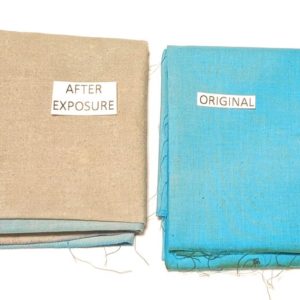Water leaks can be a nightmare for homeowners, boaters, and professionals in quality assurance. From hidden plumbing issues to moisture creeping under roof shingles, even small amounts of water can cause significant damage over time. Thankfully, cobalt chloride provides a simple, cost-effective way to detect unwanted moisture. This powerful compound changes color in response to humidity, making it an excellent indicator for leak detection.
The Science Behind Cobalt Chloride’s Color Change
Cobalt chloride (CoCl2) is an inorganic compound that shifts from blue to pink as it absorbs moisture. This transformation occurs due to structural changes in the crystal as water molecules integrate into the compound:
- Anhydrous Cobalt Chloride (Blue): In dry conditions, cobalt chloride remains blue.
- Dihydrate Form (Purple): As humidity increases, two water molecules bond to each cobalt atom, forming a dihydrate.
- Hexahydrate Form (Pink): Further humidity absorption leads to a hexahydrate state, in which six water molecules surround each cobalt atom, creating a pink color.
The color transition is striking, making cobalt chloride an excellent tool for detecting humidity and leaks.
How Cobalt Chloride is Used in Leak Detection
Cobalt chloride-infused test papers strips, sheets, cloths, and One of the most valuable properties of cobalt chloride test materials is their reusability. The color change is reversible—when dried, the material returns to its original blue state. This allows for multiple uses, as long as the test paper or cloth doesn’t come into direct contact with water, which could cause the cobalt chloride to wash away. Additionally, humidity test strips can be calibrated to react at specific relative humidity (%RH) levels. For instance, our How to Use Cobalt Chloride Paper for Leak Detection For particularly tricky leaks, strips can be inserted into small crevices, under appliances, or along potential weak points in a structure to pinpoint moisture intrusion.Reusable and Reliable Leak Detection
Recommended products
Cobalt Chloride Moisture and Humidity Detection Test Paper [Vial of 100 Strips]
Cobalt Chloride Test Paper 8×10 Inch Sheet [Pack of 24] for Leak Detection
20″ x 20″ Reusable Cobalt Chloride Moisture & Leak Detection Cloth
4 Pad Cobalt Chloride Humidity Test Strip 20% – 80% Humidity [Vial of 50 Strips]

![IMG_20200604_113247 Cobalt Chloride Moisture and Humidity Detection Test Paper [Vial of 100 Strips]](https://bartovation.com/wp-content/uploads/2020/03/IMG_20200604_113247-300x300.png)
![IMG_2570 Cobalt Chloride Test Paper 8x10 Inch Sheet [Pack of 24] for Leak Detection](https://bartovation.com/wp-content/uploads/2022/05/IMG_2570-300x300.png)

![HUMIDITY 4 PAD 4 Pad Cobalt Chloride Humidity Test Strip <span class="bldppm">20% - 80%</span> Humidity [Vial of 50 Strips]](https://bartovation.com/wp-content/uploads/2020/03/HUMIDITY-4-PAD-300x300.png)